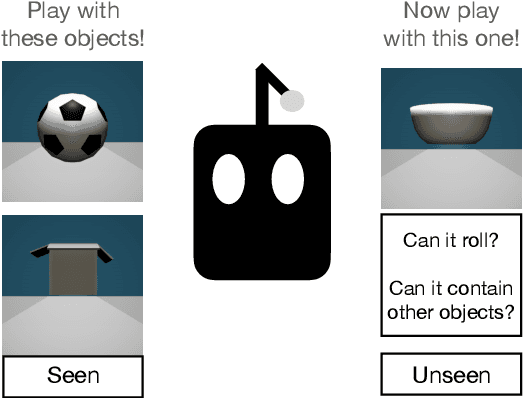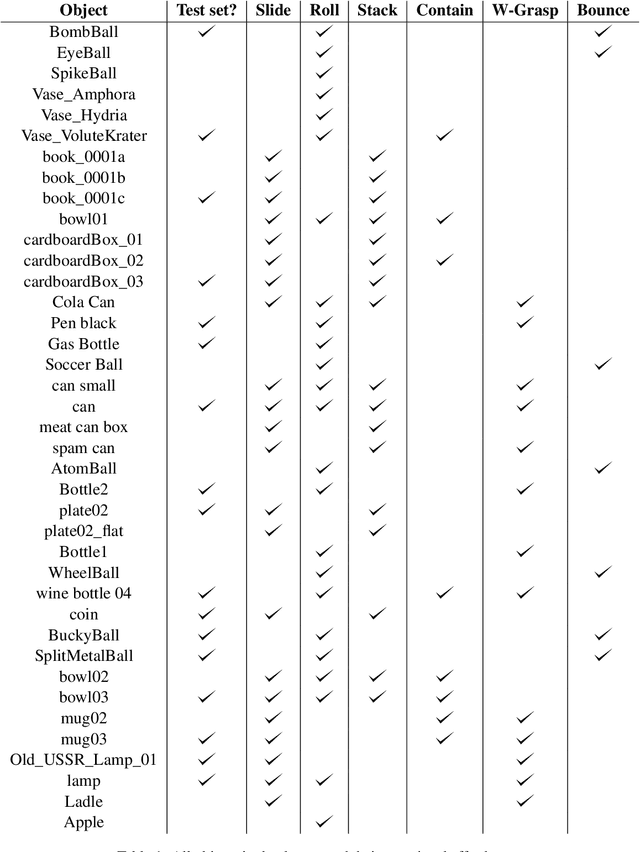Pretraining on Interactions for Learning Grounded Affordance Representations
Paper and Code
Jul 05, 2022



Lexical semantics and cognitive science point to affordances (i.e. the actions that objects support) as critical for understanding and representing nouns and verbs. However, study of these semantic features has not yet been integrated with the "foundation" models that currently dominate language representation research. We hypothesize that predictive modeling of object state over time will result in representations that encode object affordance information "for free". We train a neural network to predict objects' trajectories in a simulated interaction and show that our network's latent representations differentiate between both observed and unobserved affordances. We find that models trained using 3D simulations from our SPATIAL dataset outperform conventional 2D computer vision models trained on a similar task, and, on initial inspection, that differences between concepts correspond to expected features (e.g., roll entails rotation). Our results suggest a way in which modern deep learning approaches to grounded language learning can be integrated with traditional formal semantic notions of lexical representations.
 Add to Chrome
Add to Chrome Add to Firefox
Add to Firefox Add to Edge
Add to Edge